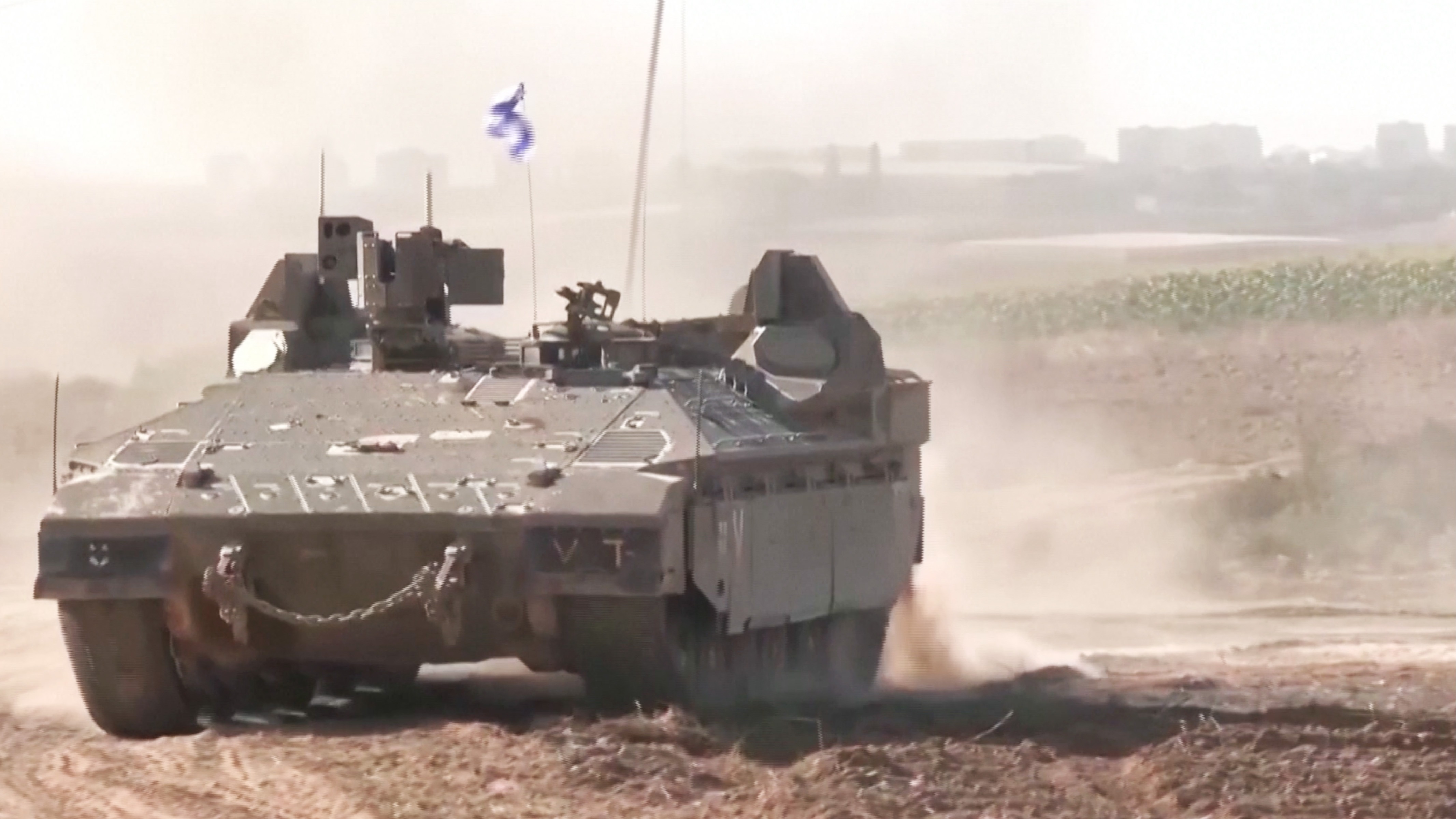Frightened residents fled Gaza City after Israel told more than 1mn people to leave the area in a move Palestinians denounced as a “forced displacement” and which the UN said would be “calamitous”.
Thousands were on the move on Friday, fleeing their homes in overcrowded minibuses, cars and on foot as they contended with fuel shortages and destroyed roads.
The warning for about half of the Gaza Strip’s population to relocate from the north to the south of the enclave came with what the UN said was a 24-hour deadline, as Israel maintained its siege and bombardment of the 40km-long territory, particularly its main city.
“Civilians of Gaza City, evacuate south for your own safety and the safety of your families and distance yourself from Hamas terrorists who are using you as human shields,” the Israel Defense Forces said in leaflets it dropped on the territory on Friday.
About 1.1mn of Gaza’s population of more than 2mn live in the northern part of the Hamas-controlled enclave, which includes Gaza City and its outskirts.
The IDF added: “This evacuation is for your own safety. You will be able to return to Gaza City only when another announcement permitting it is made.”
The UN said on Friday that over 423,000 people had already been internally displaced in Gaza — up from 187,000 three days ago.
Nevine Ahmed, a mother of six, said she was heading to her family home in Khan Younis in southern Gaza, but that it also had been under bombardment.
“I fear Israel may be pushing us to the south, then they would bomb us to force us to storm the border into Egypt,” she said.
Israel declared war and launched air strikes on the enclave after Hamas gunmen crossed the border on Saturday, killing more than 1,300 civilians and soldiers and kidnapping dozens more.
Palestinian authorities say that so far about 1,800 people have died in Gaza because of the Israeli bombardment.
Speaking as he met US secretary of state Antony Blinken in Jordan, Palestinian president Mahmoud Abbas said a “forced displacement” would amount to a “second Nakba”, or catastrophe. The term is used by Palestinians to refer to Israel’s foundation in 1948, when hundreds of thousands were expelled or fled.
In the comments, reported by the Palestinian news agency Wafa, Abbas also called for humanitarian corridors to Gaza and an “immediate end to the Israeli aggression”.
Amid confusion in Gaza, queues formed in front of petrol stations, which were later shut due to lack of fuel. With much of the city reduced to rubble, many streets are impassable for cars and traffic jams soon formed.

“We will not leave, we will stay together,” said Om Saher, who lives in Beit Lahia in the north of Gaza with four of her married children and their families. “Either we live together or we die together. We will not be displaced again.”
The territory’s interior ministry told people to remain where they were, even as the IDF said it would “continue to operate significantly in Gaza City” in coming days.
Some in the region took Friday’s warning, a week into the Israel-Hamas war, as a sign of an imminent ground operation focused on the densely populated city and the north of the enclave. Israel says it has hit 2,687 targets in Gaza and that over 6,000 rockets have been fired from the territory.
The UN said its humanitarian and security teams had been informed by “liaison officers in the Israeli military that the entire population of Gaza north of Wadi Gaza [an area in the centre of the territory] should relocate to southern Gaza within the next 24 hours”.
But an Israeli military official did not confirm that there was a 24-hour deadline, adding that moving would “take time”.

The UN said Israel’s call applied to its own staff in Gaza and to tens of thousands of displaced people sheltering in UN facilities, including schools, health centres and clinics.
“The United Nations considers it impossible for such a movement to take place without devastating humanitarian consequences,” said spokesperson Stéphane Dujarric, warning that it could “transform what is already a tragedy into a calamitous situation”.
The IDF said it was “controlling” its attacks to provide a “safe way” for evacuation. Rear Admiral Daniel Hagari, an IDF spokesperson, said: “As much as we can — it’s a war zone — we will try to make sure that it happens safely.”
He accused Hamas of a “crime against humanity” by holding dozens of hostages in Gaza — including Israelis, and American and European citizens.
The UN’s agency for Palestinian relief, UNRWA, called on Israel to protect the 270,000 people taking refuge in its shelters, adding that international humanitarian law meant they must “never come under attack”.
The agency said Gaza City was its centre of operations but that it was relocating some staff to the south to allow it “to continue operations and services to people in need in Gaza”.
Gaza’s residents are prevented from leaving the enclave by restrictions imposed by Israel and Egypt and the IDF blockade. Israel has also cut water, power and fuel supplies.
The territory’s health authority released photos of what appeared to be gravely injured children in crowded hospital conditions, including on the floor. Gaza’s main power station ran out of fuel this week.

Talks with Egypt to open a humanitarian corridor or a hub for refugees on its side of the border with Gaza have so far failed, a western diplomat involved in the negotiations said. They added that Israel’s bombardment has been so intense that no aid convoys are under discussion unless a ceasefire is in place.
Additional reporting by Neri Zilber in Tel Aviv, Heba Saleh in Cairo and Joe Leahy in Beijing
Credit: Source link














